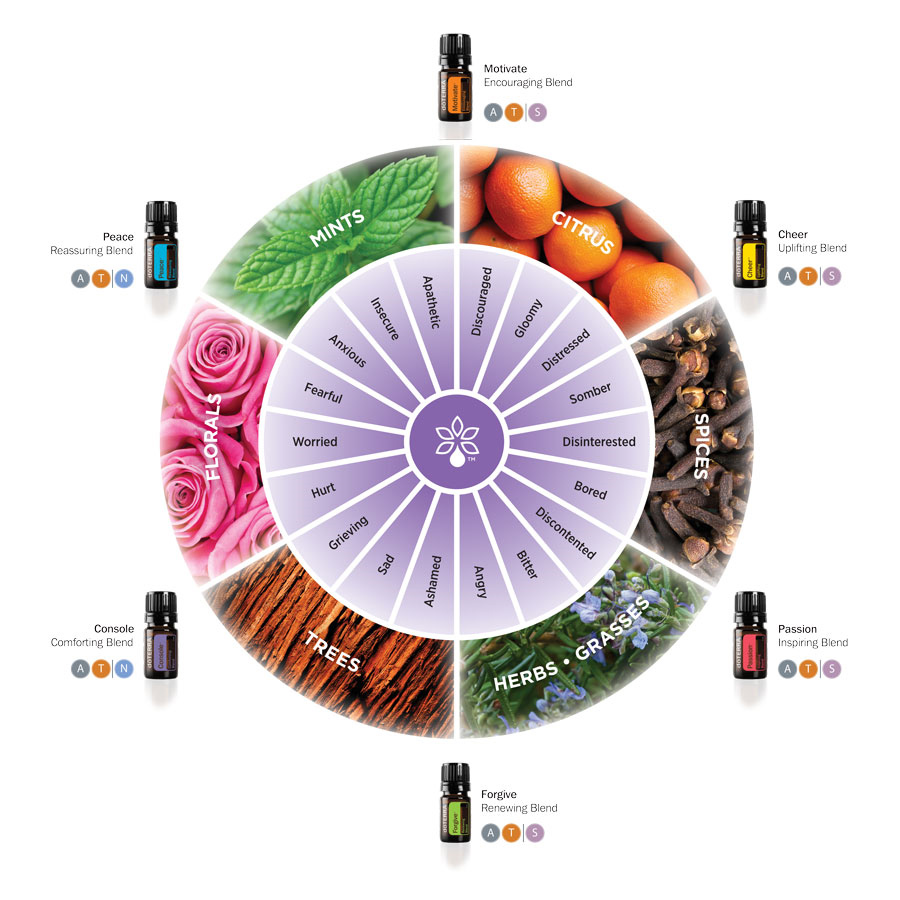The first thing you need to do when you start the process of creating an essential oil blend is to ask yourself a few questions.
- Who is this essential oil blend for?
- What effect do I want it to have?
- When will it be used?
- Where will it be used?
- Why is this blend needed?
- How will it be applied?
The basic definition of an essential oil is a hydrophobic liquid that contains aromatic compounds. They are sourced from plant materials such as leaves, roots, stems, seeds, fruits, flowers, or bark. The term “essential” oils is used because the liquid contains the essence of whatever its source plant is. The oil itself is a highly potent, highly concentrated substance.
Many of the benefits of essential oils have to do with their aromas. To see how different aromas and chemicals in essential oils effect on your emotions, check out the oil properties wheel. However, other research also shows that essential oils can help the body in more ways. Physiology aside, whether or not an aroma is appealing to you depends on personal preference. So how do you know if you’ll like the scent of a blend of oils that you make yourself? This guide can help you decide.
First, you can categorize scents in different categories such as top, middle, or base notes. (“Note” refers to how long the scent usually lasts.) Top notes evaporate quickly and have the shortest life. Middle notes make up the majority of essential oils and take some time to establish their scent. Base notes are heavy and last the longest as they evaporate slowly.

There are also families of scent that apply to essential oils. We have included some of them below along with what ‘note’ each is considered:
- Floral blends with floral, woody, spicy, and citrus
- Woody blends with woody, floral, earthy, herby, minty, and citrus
- Earthy blends with earthy, woody, and minty
- Minty blends with minty, woody, earthy, herby, and citrus
- Citrus blends with citrus, floral, woody, minty, and spicy
Citrus
- Encompassing oils like Wild Orange, Lime, Lemon, and Bergamot, citrus aromas are usually easy to identify. They smell fruity and clean, with a bit of a sour bite. Citrus notes are most often top notes.
Spice
- Spicy oils are often warm-smelling and some are a little balsamic (meaning the scent is somewhat resinous with a sweet or vanilla-like tone, somewhat like balsamic vinegar). They can be middle to base notes. Cinnamon Bark, Cassia, Cardamom, and Black Pepper.
Herb/Grass
- Have you ever smelled an herb garden or walked in a grassy field in spring? That’s precisely how many of the herbs and grass oils smell. Fresh and sharp, most oils here are usually middle notes. These include oils like Thyme, Rosemary, Basil, Patchouli, or Marjoram.
Tree/Wood
- Woody fragrances are middle to base notes. Their scent is grounding and stabilizing, much like the roots of the trees they come from. Most wood oils can be described rich, woody, nutty, or sweet. Arborvitae, Cedarwood, and Sandalwood are good examples.
Floral
- Floral oils are mostly middle notes. They are often powdery and soft smelling and very much like the flowers they come from. This includes oils like Lavender, Geranium, and Ylang Ylang.
Additionally, you may see other descriptions like:
- Minty: Cool and fresh scents, such as Peppermint or Spearmint. (Top notes)
- Earthy: Oils with an almost smoky and earth-like scent, like Vetiver. (Base notes)
You then need to determine what categories of scent you like based on your own preferences, it’s time to blend. Keep in mind that essential oils from the same scent family or category usually blend well together. But, if you want a balanced scent, you will want to use all three note types in a blend for the best results.





